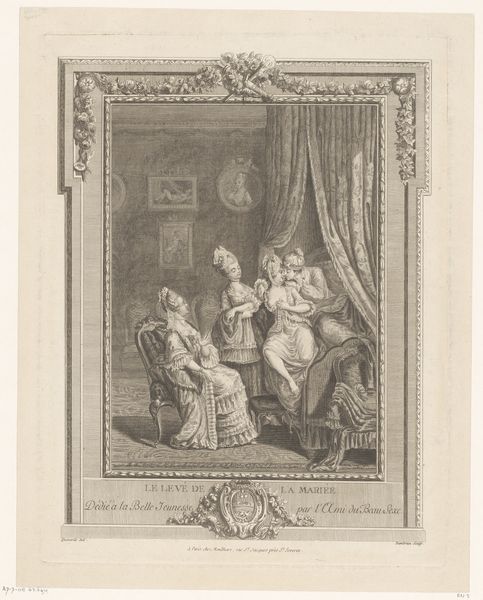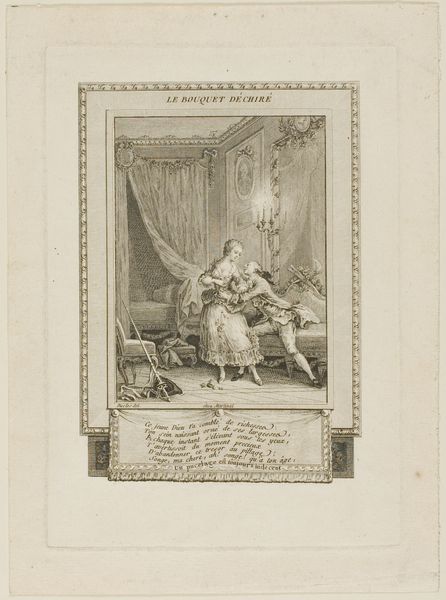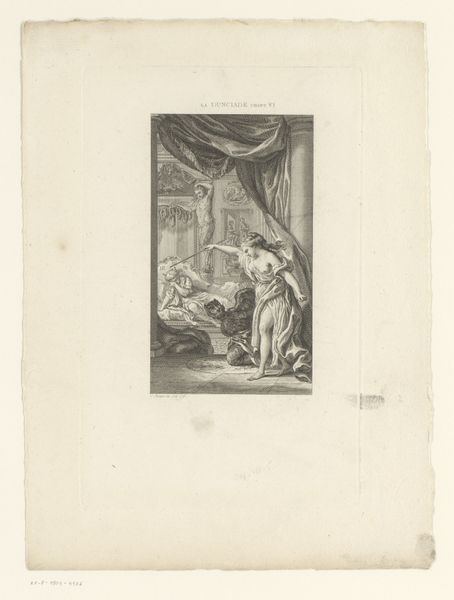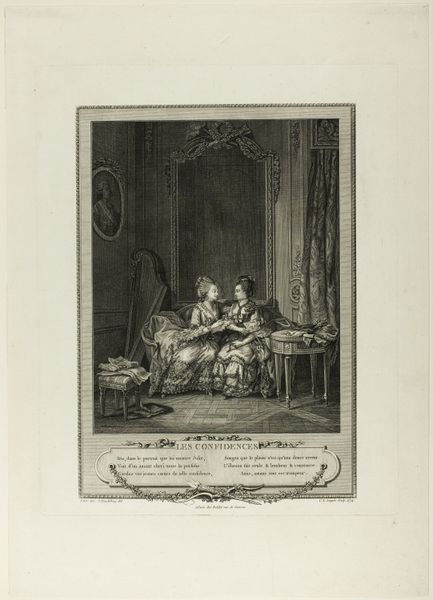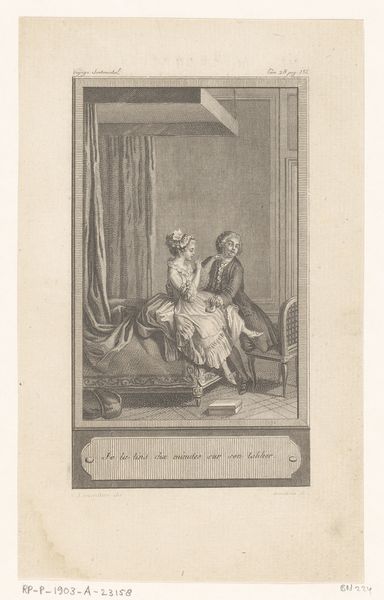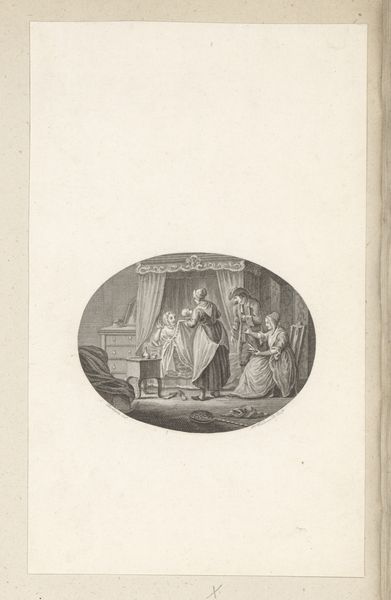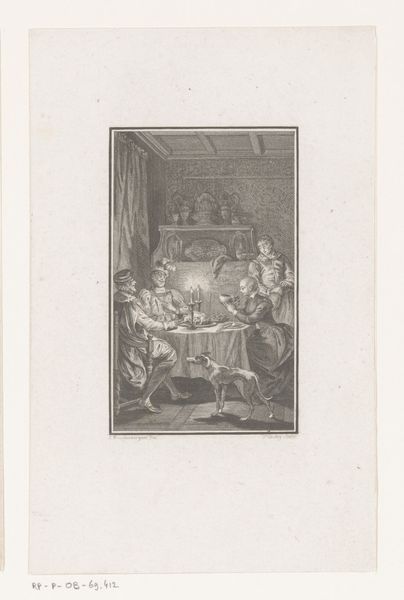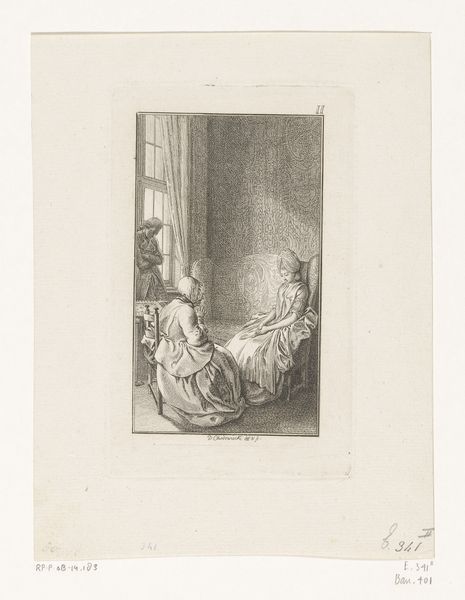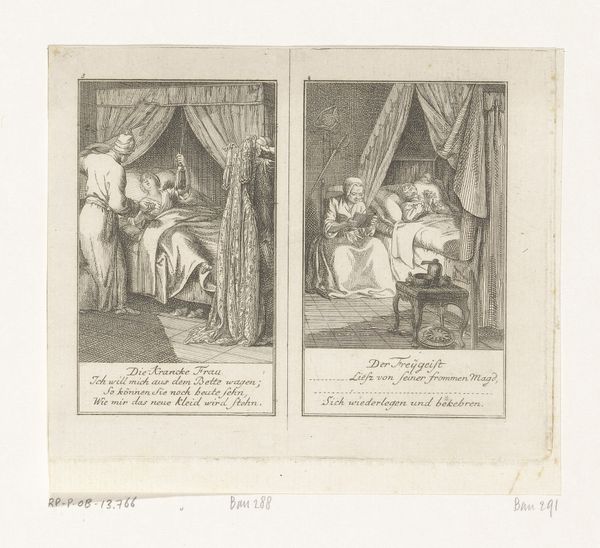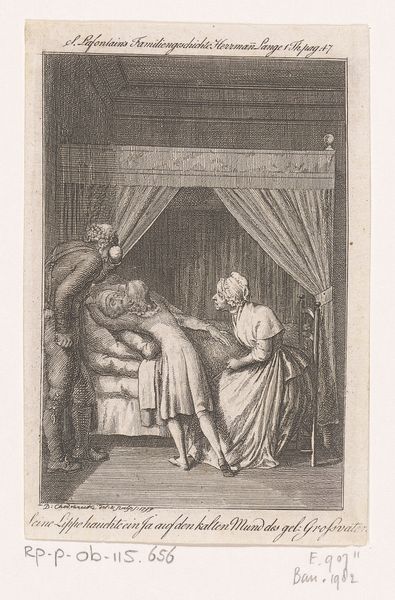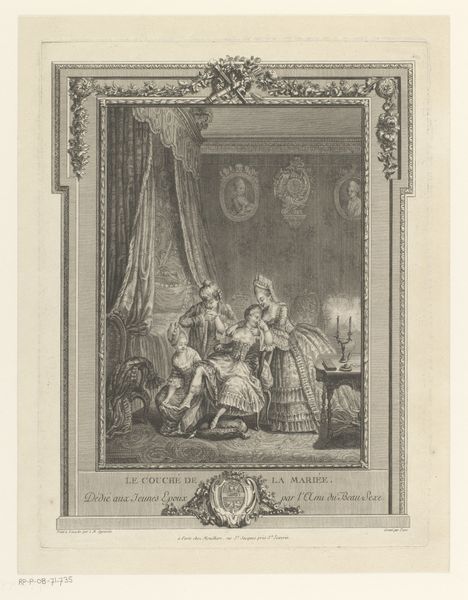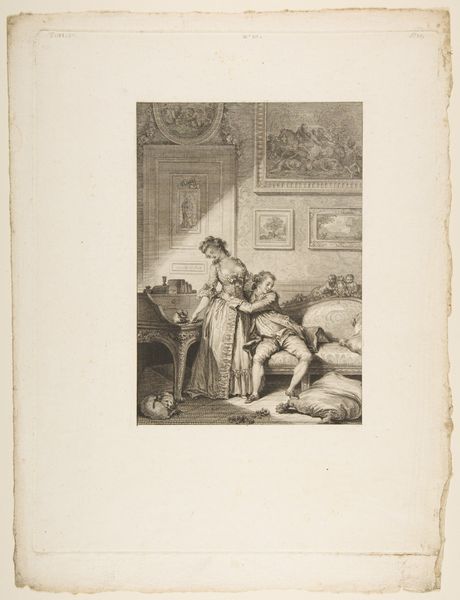
Dimensions: height 111 mm, width 70 mm
Copyright: Rijks Museum: Open Domain
Editor: This is "Lisette door haar man bedrogen," which translates to "Lisette Betrayed by Her Husband," made by Johann Rudolph Holzhalb sometime between 1746 and 1806. It's an engraving. The scene depicts a woman embracing another man while her husband seems to be in bed, sick. What jumps out at me is the stark contrast between the figures in the foreground and the implied narrative. What can you tell me about this work? Curator: Consider the material context of this engraving. Prints like this, mass-produced, brought images and narratives to a wider audience, serving almost as visual gossip or cautionary tales. It invites a discussion about gender, labor, and societal expectations during that era. Editor: That’s interesting! It’s like a 18th-century meme in printed form. How does that production aspect affect our reading of the scene itself? Curator: Well, the print medium allows for the democratization of the image, but it also dictates certain constraints. The engraving process – the manual labor involved, the lines etched into metal – speaks to the standardization and replication of ideas about morality, betrayal, and domesticity. Who do you think the audience for these types of narratives was, and how did the material conditions shape the consumption of these kinds of works? Editor: It feels aimed at a middle class audience, maybe women, who might be reflecting on their own lives and social roles, or maybe men, policing the conduct of women? Did the cost or access to the artwork impact how its narrative might have been received? Curator: Precisely! Access would have played a significant role, determining who engaged with and propagated these notions of morality and betrayal. Examining the paper quality, the skill of the engraving, and the distribution channels would give us further insights into the social life of this object. The "betrayal" it depicts is both subject of the print but also can be viewed from the context of its use, with class and morality intertwined through consumerism and print-making production of the time. Editor: I never considered how deeply intertwined the process and social standing could be in a seemingly simple image. Thank you!
Comments
No comments
Be the first to comment and join the conversation on the ultimate creative platform.

